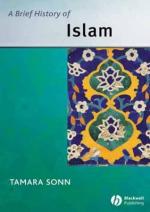|
This section contains 613 words (approx. 3 pages at 300 words per page) |

|
Methods. Personal observation was the first and foremost means by which Islamic geographers gathered information about the earth and its flora and fauna, land forms, bodies of water, and resources. Looking down at the ground, however, provided only part of the picture; geography could not exist without the use of external bodies—the sun, moon, planets, and stars—as reference points. The complex orbits and rotations of the various spheres, including the Earth, necessitated astronomical and mathematical studies. Advances in these fields served geographers' need to explain climate, tides, atmospheric conditions, and to fix precisely the location of cities and places relative to each other. Observatories made such advances possible. Muslims maintained the observatory at Jundi-Shapur and built new ones at Baghdad, Palmyra, and Cairo, as well as in the hills outside Damascus. In Muslim Spain observatories were built in Toledo...
|
This section contains 613 words (approx. 3 pages at 300 words per page) |

|




